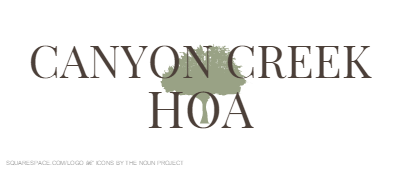The next HOA Board Meeting is set for Monday, Sept. 16 at the Church at Canyon Creek in an upstairs room of the main church building called the “Cross Room”. At this meeting the Board will consider and adopt the operating and capital budget for 2020. Before this meeting, I wanted to give an update on where we are, where we’ve come from and where we plan to go over the next couple of years.
As many of you know, 2019 is the first year since 2004 that the Association has raised its annual regular assessment. Most of the Association’s contracted expenses (landscaping, management fees, pool service, lifeguards, custodial, pest control, etc.) increase by about 3-5% annually. Some expenses, such as insurance, increase even more than that annually. In the intervening 15 years, the Association’s direct operating costs regularly increased without a corresponding increase in assessments to keep up. I spoke at length on this subject at the 2018 annual meeting and wrote up a summary that you can read here.
The draft budget for 2020’s direct operating costs is currently $488,451. The majority of these costs are non-discretionary expenses covering the direct care and management of the property. Our discretionary operating expenses center around the budget for our annual community events such as the spring egg hunt, fall and winter festivals, back to school pool party and the recently added movie night at the pool. The proposed budget for all community events is currently just over $12,000, or a bit over $9 per household.
In cash flowing commercial real-estate, one metric for analyzing a property is the Operating Expense Ratio (OER). In simple terms, this number is just the direct operating costs divided by gross revenue. A lower number is better and you typically want to see this in the 60-80% range which means that 20-40% of a property’s income is allocable to paying investors a return and for the reserve fund. Since the Association does not have investors to whom it must pay a return, I’ve internally set our target to the high end of that range at 80%. This means that 20% of our gross assessment income is allocated for reserves and capital projects. By comparison, 2018’s budgeted OER was 85%, a little too high for comfort. (And, in fact, the actual number is almost always higher due to unforeseen repairs and expenses that weren’t originally budgeted.) To gain insight into our expected capital expenses, the Association commissions a reserve study every 3 years to identify our needs out for the next 30 years along with the recommended annual contribution to reserves and the target balance of the reserve fund along the way. The reserve study only considers the “hard” assets of the Association and doesn't include costs for major restoration or maintenance projects for landscaping, beds, sod, tree maintenance, etc. It should therefore be viewed as the most conservative assessment of our financial needs if the Board takes on no other projects. The reserve study, along with other projects the Board prioritizes drives the total capital expense budget.
For 2020, the reserve study calls for patch, seal and striping of the CCHOA pool/courts parking lot at an estimated $9500 (in round numbers) and another $18K in repairs to the concrete pool deck. Since there are additional repairs and maintenance to the pool identified for 2021, the draft budget I’m proposing defers the $18K deck expense to 2021 so that we can address all of these elements at once in a holistic way. In addition, the Board is prioritizing $70,000 in landscape improvements along Boulder Lane to address unsightly erosion, bare dirt, beds, tree wells and other hardscape that has fallen into disrepair. We’re also allocating $25,000 to address concerns from a number of HOA members on safety and security, make some long needed electrical repairs and a small handful of other items. Looking ahead, we have a lengthy list of deferred maintenance, upkeep and appearance projects that we are playing catch up with including the aforementioned maintenance and repairs to the pool concrete deck and tile, correcting erosion and drainage problems at the tennis courts, ongoing restoration of beds, sod and landscaping along Boulder Lane, addressing erosion and muddy washouts on our sidewalks among other things. We are prioritizing these items ahead of other long awaited projects such a new landscaping installation to the south entrance medians and installation of a shade canopy for the baby pool.
If we ignore for a moment the 3-5% annual increases in many of our actual direct operating costs and instead take the U.S. Department of Commerce’s average 2% annual inflation rate since 2004, then our regular assessments, simply pacing the inflation rate, should be at $549 per household; and if we consider 2.5% a conservative rate that blends all of our annual operating cost increases, then the regular assessment would be just shy of $600 each year. Taking all of the above into account, for 2020, we are targeting a 10% bump in the regular assessment, going from $440 to $484 ($3.66 per month per house). This gives us an operating expense ratio of 78% (slightly better than target) and with the capital expenses outlined above, leaves a net increase to our reserve fund of $32,443 as we exit 2020. As we address many of these deferred projects, I do expect our operating costs to increase somewhat as we pay more attention to maintaining these elements going forward. That said, managing our costs while properly running the Association and maintaining our Amenities and common areas has been and will continue to be a priority for all board members.
There will definitely be a few minor tweaks to these numbers as some final quotes come in late for our insurance renewals, and from other vendors but I am not expecting any material swings at this point. Please consider attending the meeting if you can.
